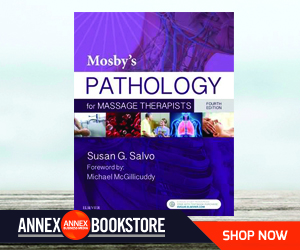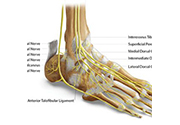| |
| |
 |
 |
| |
 |
|
@{mv_date_MMM d, yyyy}@ |
|
| |
» Read more...
» Read more...
» Read more...
|
| |
|
| |

Complete massage pathology information in one convenient text! Written by a massage therapist for massage therapists, Mosby’s Pathology for Massage Therapists, 4th Edition provides direct information along with specific therapeutic recommendations. Coverage of over 300 pathologies shows you how to appropriately tailor treatment, and more than 500 full-color photographs make it easier to recognize common pathologies. This edition includes a new chapter on Hospital-based massage which covers protocols needed for therapists working with clients who are medically fragile. Written by massage therapy educator and practitioner Susan Salvo, this resource provides the pathology knowledge you need to succeed in the classroom and in your career.
» Shop Now |
| |
|
| |
 Advancements in technology and research have expanded our knowledge and understanding of the different types of pain, including referred pain and the contributing factors that influence pain perception. Pain is multidimensional. It impacts all aspects of our lives and is influenced by all inputs from our environment. Today we understand that pain is an amalgamated expression of three important underlying components—physical, psychological, and social. These components of pain integrate with each other as well as the patient’s social environment to produce the final notion of pain for the patient. This gives rise to the biopsychosocial model of pain. But pain is not just limited to these three components.
» Learn More
Advancements in technology and research have expanded our knowledge and understanding of the different types of pain, including referred pain and the contributing factors that influence pain perception. Pain is multidimensional. It impacts all aspects of our lives and is influenced by all inputs from our environment. Today we understand that pain is an amalgamated expression of three important underlying components—physical, psychological, and social. These components of pain integrate with each other as well as the patient’s social environment to produce the final notion of pain for the patient. This gives rise to the biopsychosocial model of pain. But pain is not just limited to these three components.
» Learn More |
| |
|
| |
What is the next iteration of on demand mobile massage, and how will technology continue to play a role? We discuss all of this and more with the CEO of Massago, Allan Skok.
» Listen now
|
|
How does the Code of Ethics frame Scope of Practice in assisting the practitioner in complicated decision making? How do we build a “working alliance” with clients? What is a “touch-triggered” response? How can we effectively set boundaries? This and more as we consider all that happens in the therapeutic encounter.
» Listen now
| | |
|
| |
|
|
| |
| |




